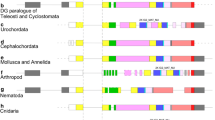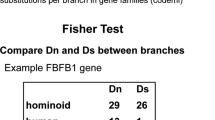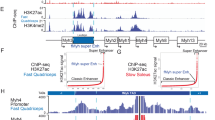Abstract.
About 1.6 kb of the noncoding region upstream of the muscular dystrophin gene was sequenced in human and other primates. The alignment showed the existence of many stretches of conserved sequences among the compared species distributed all along the investigated fragment, including the 5′ end. In correspondence to these conserved boxes, we identified several new putative cis-acting elements that have similarity to known control regions of other muscle-specific genes. In some cases, however, the conserved sequences did not correspond to any known transcription factor binding sites. The rate of evolution estimated site by site all along the investigated region revealed a nonhomogeneous distribution of the substitution rate, several sequences exhibited a very slow rate of evolution suggesting that evolutionary forces of different nature may be at work. On the basis of the sequence alignment, we reconstructed the phylogenetic relationships within the hominoid lineage. In addition, we estimated the relative rate of evolution between hominoid and Old World monkeys, confirming the existence of an evolutionary slowdown in the hominoid lineage.
Similar content being viewed by others
Author information
Authors and Affiliations
Additional information
Received: 10 March 1997 / Accepted: 14 May 1997
Rights and permissions
About this article
Cite this article
Fracasso, C., Patarnello, T. Evolution of the Dystrophin Muscular Promoter and 5′ Flanking Region in Primates. J Mol Evol 46, 168–179 (1998). https://doi.org/10.1007/PL00006292
Issue Date:
DOI: https://doi.org/10.1007/PL00006292




